
Introduction
The Great Molasses Flood of 1919 remains one of the most bizarre and tragic events in Boston’s history. On January 15, 1919, a massive molasses tank, owned by the United States Industrial Alcohol Company, burst open, sending a wave of thick, sticky molasses rushing through the streets of the North End neighborhood. The flood claimed 21 lives, injured 150 people, and caused widespread property damage. This event not only shocked the city but also had long-lasting effects on urban planning and safety regulations in Boston. The aftermath of the disaster brought about changes in both physical infrastructure and legal frameworks, ultimately reshaping how the city approached industrial safety, urban development, and public welfare.
The Molasses Tank and the Cause of the Disaster
The molasses tank involved in the flood was a massive, 50-foot-high structure that stored around 2.3 million gallons of molasses. The tank was designed to hold molasses for use in industrial alcohol production, which was a major industry during Prohibition, when alcohol was being illegally distilled for use in the production of spirits. However, the tank was poorly constructed, and its material—corroded steel—was not able to withstand the pressure of the molasses it contained. According to reports, the tank had already shown signs of structural weaknesses, including leaks, but the company had done little to address these concerns.

On that fateful day, the tank’s walls buckled under the pressure, causing a catastrophic rupture. A tidal wave of molasses—reportedly traveling at speeds of 35 miles per hour—rushed through the streets of the North End, sweeping away buildings, vehicles, and even people. The event was chaotic, and the molasses flood became a source of local legend in Boston, forever etching itself into the city’s collective memory. However, beyond the immediate devastation, the flood also revealed deep flaws in urban infrastructure and safety standards that had been overlooked by both industry leaders and city planners.
Immediate Impact on the North End Neighborhood
The North End, home to many working-class immigrants, was one of Boston’s most densely populated neighborhoods in 1919. The flood occurred during a time of intense industrialization, and the area was dotted with factories, warehouses, and residential buildings. When the molasses tank burst, it unleashed a deadly torrent that ravaged everything in its path. Streets were flooded with thick molasses, which quickly solidified as it cooled, creating a sticky, nearly impenetrable mess. Buildings were destroyed, and the local residents were trapped in the sticky floodwaters, some of them fatally injured by the weight of the molasses or by debris that was carried along with the flow.
Rescue operations were difficult, as the molasses slowed down response times. Firefighters, police officers, and volunteers struggled to reach the affected areas, and many of the injured were left in dire need of medical care. The smell of molasses permeated the area for weeks, further traumatizing the community. In the wake of the disaster, the city was forced to confront the inadequacy of its emergency response systems and the dangerous proximity of industrial facilities to residential areas. The North End became a focal point for discussions on urban planning, particularly regarding the placement of factories and warehouses in densely populated neighborhoods.
Legal and Regulatory Aftermath: A New Era of Safety Standards
The immediate response to the Great Molasses Flood was one of grief and disbelief, but it also sparked a wave of legal action. The victims and their families filed lawsuits against the United States Industrial Alcohol Company, which had built the faulty tank. The company’s negligence in maintaining the tank and failing to address the clear signs of structural failure were central to the legal proceedings. In the end, the company was held liable, and they were forced to pay compensation to the victims and their families.
However, the legal outcome was just one part of the broader changes that emerged in Boston. The disaster prompted an overhaul of industrial safety regulations and the development of new standards to protect public welfare. The city’s leadership recognized the need for more stringent oversight of industrial sites and the construction of safer, more resilient infrastructure. New building codes were implemented, particularly for large industrial structures, with a focus on ensuring that materials used in construction were of higher quality and that safety features, such as pressure relief valves, were included to prevent similar incidents from occurring.
Furthermore, the Great Molasses Flood underscored the need for better emergency preparedness. In response, Boston began investing in more robust fire and rescue systems, training personnel to handle hazardous materials, and developing disaster response protocols. The event also highlighted the importance of public transparency and corporate accountability, prompting further regulations on how industrial companies were expected to report safety inspections and disclose potential hazards.
Reformation of Urban Planning Practices in Boston
The Great Molasses Flood also triggered a significant shift in urban planning practices across Boston. Before the flood, there was little regulation regarding where industrial facilities could be built within the city. Factories, warehouses, and other industrial structures were often situated in close proximity to residential areas, which led to dangerous and unsustainable living conditions. The flood made it clear that mixing heavy industry with densely populated residential neighborhoods was a recipe for disaster.
In response to the disaster, Boston’s urban planners began to rethink zoning laws and land-use policies. The city adopted stricter regulations that dictated where industrial sites could be located. Areas with high residential density were prioritized for development and public infrastructure, while industrial zones were relocated to less populated parts of the city or even to nearby suburban areas.

These changes not only helped improve the safety of residents but also began a broader trend of urban decentralization, with industrial areas being placed outside of the downtown core to reduce the risk of accidents and promote more livable spaces.
The flood also spurred the development of more sophisticated infrastructure. Over the next few decades, the city invested in projects to improve public transportation, create more green spaces, and enhance the resilience of the built environment. The aftermath of the Great Molasses Flood marked a turning point in Boston’s approach to urban planning, prioritizing safety, livability, and long-term sustainability.
Long-Term Effects on Public Health and Safety
In addition to the immediate changes in urban planning and industrial regulations, the Great Molasses Flood had lasting implications for public health and safety. The disaster forced both the city and the country to rethink their approach to industrialization and the risks it posed to workers and residents. While Boston was a key player in these reforms, the lessons learned from the molasses flood had broader national implications.
In the years following the flood, the U.S. government introduced new workplace safety laws and regulations designed to protect workers from hazardous conditions. The Occupational Safety and Health Administration (OSHA), established in 1970, was part of a broader movement toward ensuring safe and healthy working conditions in factories and industrial sites. Although the flood occurred before OSHA’s creation, it helped set the stage for future legislation by highlighting the importance of oversight and the need for proactive measures to prevent accidents.
The Cultural Significance: How the Great Molasses Flood Became Locally Legendary
In addition to the immediate and long-term regulatory and infrastructural reforms, the Great Molasses Flood of 1919 also became a permanent fixture in Boston’s cultural landscape. Through the decades, the disaster was memorialized in local legend, retold with a combination of incredulity and gallows humor. Locals and tourists alike came to connect the North End with the bizarre and catastrophic calamity, and it became a source of both pride and loss for Bostonians.
Years later, when new generations of Bostonians settled in the North End, the memory of the molasses flood was a potent, sometimes eerie, reminder of the city’s durability. It led to the establishment of local museums and memorials, ensuring the memory of those who perished in the disaster was remembered. Local newspapers have intermittently re-covered the incident, and books and publications have persisted to chronicle the strange and unfortunate event. The history of the flood even creeps into Boston’s tourism scene, where people tend to discover the legacy of the flood while learning about the city’s complex, multifaceted history.
In a more contemporary sense, the flood has also found itself in popular culture. It has been cited in fiction, documentaries, and even works of fiction, solidifying its place among Boston’s most peculiar historical occurrences. This incorporation of the tragedy into Boston’s culture illustrates how, decades after the fact, the tragedy was reconstructed from one of disaster to one of the city’s survival and ultimate resurgence. It was also an integral part of the larger saga of Boston becoming a major metropolis, one that represented how a city that had learned to correct its missteps in the past was poised to grow greater.
Technological Breakthroughs: The Engineering Drive for Urban Security
Following the flood, Boston started looking into how new engineering technologies would ensure that such a disaster would never happen again. Developments in civil engineering, materials science, and construction techniques started to shape the city’s urban development strategy. The molasses tank collapse highlighted the importance of strict structural integrity tests on all major industrial projects, especially those dealing with potentially dangerous materials.
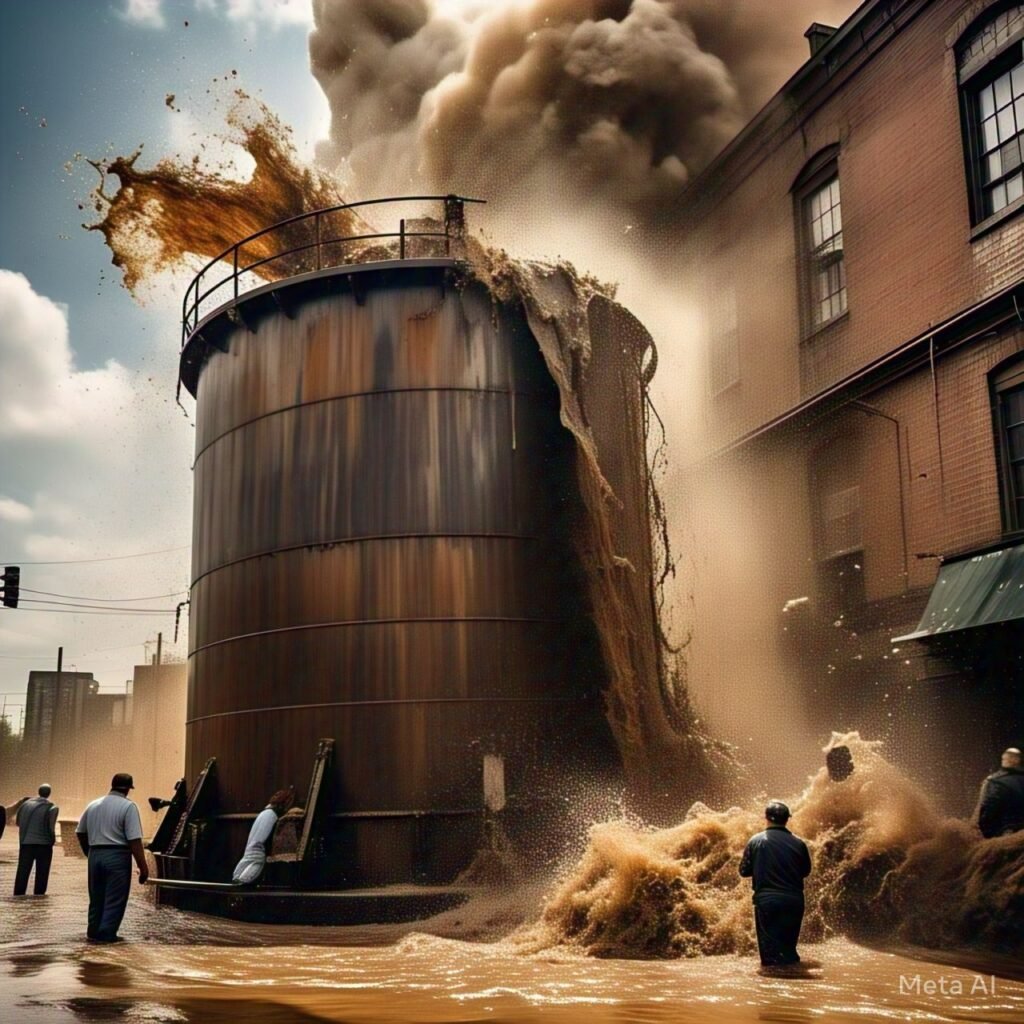
New materials, including reinforced concrete, steel, and new alloys, were utilized in the construction of tanks, buildings, and bridges. These materials were significantly more resilient and could withstand the enormous forces required in large industrial buildings. With the city initiating rebuilding, engineers started to include more sophisticated design principles, prioritizing safety features while constructing any new industrial building or residential building.
In addition, the development of sophisticated surveying and testing techniques enabled more extensive examinations of public and private buildings. The process of building inspection in the city was reformed, and the task of keeping track of the integrity of buildings, especially large tanks and industrial plants, became more standardized. This was a turning point in urban engineering, as the incident directly impacted the way cities addressed the issue of “risk management” in their urban planning and industrial infrastructure.
Public Awareness and Advocacy: A Call for Corporate Responsibility
Public indignation after the molasses flood continued far longer than the immediate event of the catastrophe. Boston residents, particularly the North End citizens, called for more corporate responsibility from the United States Industrial Alcohol Company. Public outrage increased since the company was known to be aware of the condition of the tank and didn’t do anything to avoid the catastrophe. It led to pressure for more corporate accountability in industry.
Over the next few years, consumer activist groups started gaining popularity, advocating for more supervision of corporations that worked with hazardous substances. The accident spurred a wave of a larger movement dedicated to making industries take appropriate measures to safeguard their employees as well as the general public. The concept of corporate social responsibility caught on, and companies became under greater and greater pressure to look beyond profit margins and make consideration for their operations’ broad effect on populations and ecosystems. The change in corporate responsibility resulted from the massive molasses flood because it became a call for action for firms to put concern for the harmed foremost.
Moreover, labor unions and workers’ rights groups drew inspiration from the flood as they called for improved factory and industrial site working conditions across the nation. The incident intensified the calls for reforms to save workers from hazardous conditions, and this energized the eventual development of agencies such as OSHA, which went on to speak for the protection of workers’ safety on a national platform. The Great Molasses Flood was thus central to the development of the corporate responsibility and labor rights movements of the early 20th century.
The Legal Precedent: How the Flood Shaped Future Litigation
Another long-term effect of the Great Molasses Flood was the legal precedent it established for future lawsuits against industrial accidents. The subsequent lawsuits following the disaster were some of the first of their type to treat massive industrial negligence within a court of law. The families of the victims and the victims themselves sued the United States Industrial Alcohol Company, blaming them for the massive failure of the molasses tank.
The legal struggle was lengthy and complicated, but it established a precedent for future cases of corporate negligence and public safety. Lawyers and lawmakers started examining the case’s implications, and the flood became a reference point for other industrial accident lawsuits in subsequent years. One of the most important elements of the case was the setting of more stringent legal criteria for attributing liability to corporations, particularly when public safety was in question.
Specifically, the case highlighted the importance of enforceable and clear regulations regarding the upkeep and safety of industrial plants. The decision served to strengthen the doctrine that companies owed a duty of care to their workers and the surrounding communities. In this regard, the judicial consequences of the molasses flood set the stage for stronger industrial regulations and tort law that would develop in the decades to come.
Environmental Awareness: Hazards in the Handling of Hazardous Materials
The Great Molasses Flood also left its mark on long-term hazardous material handling and storage and environmental safety practice for many years to come. Before the disaster, little environmental awareness of industrial activity impact existed. That a hazardous substance would not only damage people but leave long-lasting impacts on the environment was not known to the majority.
After the molasses flood, though, there was increased attention to environmental issues. The molasses itself, while not poisonous in the classical sense, was a very real environmental threat in its own right. It clogged up sewers, destroyed vegetation, and created unclean conditions in the area.

The deluge also reflected the exposure of urban industrial infrastructure to damage, questioning the implications of having large amounts of materials such as chemicals, oils, and alcohol stored close to highly populated residential areas.
Consequently, the incident brought about the reformulation of how industries managed dangerous materials. New legislation and regulations were established to ensure that companies would be accountable for the possible environmental impact of their operations. The flood served as an early learning experience regarding the significance of sustainable processes and avoiding industrial accidents from bringing about lasting damage to the environment.
The Role of Public and Private Partnerships in Rebuilding
Boston’s government, in the aftermath of the disaster, collaborated with private industry to redevelop the devastated neighborhoods and regenerate the city. The reaction to the flood showed the need for cooperation among public institutions and private enterprises during a state of emergency. Its authorities understood that restoration from this magnitude of disaster involved a combined effort, since public services and private enterprise were equally involved in making the region look like its pre-disaster state.

This collaboration of private and public interests assisted in speeding up the rebuilding process, and also served to create a sense of closer community. It created a blueprint for future collaborations during industrial accidents and natural disasters. The partnership paved the way for a better planned urban structure and safety protocol where the interest of both the public and private sectors was being considered.
Consequences on Transportation Infrastructure and Urban Mobility
The 1919 Great Molasses Flood also left its mark on Boston’s transportation infrastructure. Vehicles, streetcars, and roads were swept away and destroyed by the flood, immobilizing the city’s transportation network for a period. The event showed how vulnerable Boston’s current transportation system is to unexpected calamities, especially in industrial districts, where traffic could be easily halted by accidents.
Reacting to the mess that was generated by the flood, urban designers started questioning the way transport channels were linked to industrial structures. The streets in the North End, lined by automobiles, trams, and people, were not suitable for withstanding such devastation from a molasses flood. Urban designers learned that flow in industrial parts needed to be re-examined so that there could be more efficient paths for carrying toxic materials and facilitating the passage of emergency workers.
Furthermore, the flood pushed the development of alternative routes for transportation, particularly for industries dependent on goods and materials. Gradually, Boston spent money to enhance its transportation infrastructure, such as constructing broader roads and more dependable streetcar systems, that could endure both routine traffic and unexpected calamities. In a variety of ways, the flood became a catalyst for a wider initiative to modernize city transportation, which involved a growth in the city’s mass transit system as well as enhanced roads connecting prominent industrial centers with the rest of the city.
Social and Economic Transformations in the North End
The Great Molasses Flood also resulted in substantial social and economic changes in Boston’s North End. The neighborhood was a healthy, working-class community with a large Italian-American population before the disaster. The flood, though, interrupted the local economy, and numerous businesses in the district had to shut down or move out. The loss of properties, along with the lengthy recovery process, left several residents jobless or feeling unstable.
The incident also caused higher migration away from the North End, with families wanting to reconstruct their lives in less industrial and more secure communities. Although the North End continued to be an active community, it never quite returned to pre-flood times. The destruction of businesses and homes generated by the flood resulted in the influx of more affluent residents into other areas of Boston, while displaced working-class residents searched for alternatives in new city projects or suburban regions.
At the same time, the flood underscored the necessity of more robust support systems for communities, such as social services and affordable housing. In the wake of the tragedy, the city acknowledged that neighborhoods surrounding hazardous industrial areas should have access to more comprehensive social and economic support, particularly when rebounding from such calamities. These changes would ultimately shape the course of social housing and urban renewal initiatives throughout the city.
The Role of Insurance in Shaping Industrial Risk Management
Another significant feature of the Great Molasses Flood was how it redefined the role of insurance in industrial risk management. After the disaster, it became clear that the insurance sector had to take a more proactive role in evaluating and managing risks related to large-scale industrial activities.
During the flood, most companies, such as the United States Industrial Alcohol Company, had minimal insurance coverage, and many victims were not compensated enough.

The absence of adequate insurance policies for such a disaster revealed the weaknesses in the risk management procedures of industries dealing with hazardous materials. After the flood, insurance providers came to acknowledge the importance of insuring industrial facilities against devastating disasters, giving rise to increased risk management practice and insurance covers. Consequently, businesses were made to spend on improved insurance that considered the extent of all probable disasters, ranging from those affecting public safety and the environment to others.
This transition in insurance activity served not just to shield business, but it also guaranteed the workers and citizens that in any subsequent industrial catastrophe, they would have an easier avenue for damages. The deluge was the catalyst for changing perceptions within the insurance sector with respect to viewing industrial accidents in a different perspective, resulting in enhanced active threat analysis and compensation for massive industrial operations.
The Environmental Reclamation of the Molasses Flood Zone
With time, however, as Boston’s urban planning continued to develop and the Great Molasses Flood-affected section was redeveloped, the city grew increasingly focused on environmental reclamation. Although the flood itself had done severe damage, the cleanup and ultimate recovery of the region served to spotlight an emerging sense of the importance of reclaiming devastated urban landscapes.
After the floodwaters receded, the city worked to clear the sticky mess that remained, but it also had to address the environmental toll that the molasses had left on the land.

As it cooled and hardened, the molasses created a hazardous mess that required specialized cleaning methods. Over time, this cleanup process laid the groundwork for later environmental restoration projects in the city. The flood zone was gradually rebuilt, but environmental issues were given a high priority, particularly in the most affected areas along the molasses. In the context of the wider urban sustainability movement, Boston started more green spaces within the North End, and environmental protection policies began to influence city planning in the subsequent years.
The flood, as it were, was an early lesson in the need to look at the long-term environmental consequences of industrial activity on cities. The city is still investing today in programs for reclaiming and enhancing its environmental record, not forgetting the lessons of history.
A Catalyst for National Policy Changes
Though the Great Molasses Flood had direct consequences on Boston’s safety regulations and city planning, its impact extended beyond the city limits. The disaster was used as an example of industrial carelessness and ignited national debates regarding safety regulations in industrial activities.
The flood highlighted the necessity of having more standardized safety regulations throughout the United States, especially for those industries that manufactured or handled dangerous substances.

The US Congress, spurred by the extensive media coverage of the flood and the resulting devastation, started discussing the necessity for federal controls that would be able to regulate industrial safety nationally. Although it would be years before national agencies such as OSHA were established, the flood served as one of the early drivers behind the push towards codified safety regulations.
Moreover, the flood led to increased coordination among local, state, and federal governments to ensure that industry practices did not compromise public health. The experience of Boston was transferred to other cities, shaping more comprehensive legislation on industrial safety, zoning, and public health. Therefore, the flood had a wide-ranging impact, extending well beyond the city limits of Boston and playing a role in the ongoing debate about industrial safety and urban control nationwide.
The Rebuilding of Public Trust in Government and Industry
The Great Molasses Flood also signified a turning point in the dynamics of the relationship among the public, government, and industry. Before the flood, people generally assumed that industries, particularly big firms, were reliable in the sense of how they ran their businesses. But the molasses tragedy shattered such assumptions and left the people questioning the safety of industrial operations and the government’s role in maintaining public security.
In the succeeding years, the government of Boston strived hard to restore the trust of its people. Leaders of the city understood that keeping the public safe needed an open approach and active participation in monitoring industrial operations. The tragedy uncovered how corporate negligence had the potential to put entire neighborhoods at risk, and this is the reason why the city pushed for a more hands-on approach in terms of regulating industries and enforcing the standards of safety.
The restoration of public confidence was not just a matter of enhancing government procedure, but also of building a more collaborative relationship between industry and the societies that depended upon it. Industry executives, realizing the erosion of public trust, set out to spend more on corporate responsibility, realizing that the fortunes of their companies depended not just on profitability, but on the safety and health of their local communities.
Impact on Public Health Policies and Urban Resilience
The 1919 Great Molasses Flood brought to the forefront major weaknesses in public health policies, specifically in the manner in which cities reacted to unanticipated industrial catastrophes and accidents. The public health agencies at that time were primarily concerned with communicable diseases and sanitation, with minimal emphasis on industrial hazard risks. The disaster, with its mass injuries, deaths, and health issues from the sticky molasses, proved that a more inclusive, holistic strategy for public health was needed.
Following the flood, there was a significant change in the manner in which public health authorities were dealing with urban resilience and disaster preparedness. The city of Boston, and numerous other cities throughout the United States, saw the necessity for stronger systems to deal with the health and safety of citizens in the event of industrial hazards. Public health officials started calling for the implementation of systems to track industrial facilities more closely and for the development of emergency medical plans to deal with accidents involving hazardous materials.
The incident also highlighted the long-term health effects of industrial disasters. The survivors of the flood had several injuries, ranging from broken bones to internal injuries and infections. In a few instances, those who were stuck in the molasses experienced long-term health issues as a result of the trauma and the exposure to the contaminated environment. This highlighted the necessity of improved healthcare provisions and surveillance for residents in industrial areas. Public health policy shifted to emphasize the long-term health of residents and workers in industrialized communities, resulting in stricter workplace safety regulations, and more robust health surveillance programs for industrial-affected communities.
Broadening the Role of Urban Safety in Building Design
Following the Great Molasses Flood, the event took a lasting impact on the profession of architectural design and construction, especially in the area of urban safety standards. The flood brought to light extensive vulnerabilities within the design and construction of industrial structures and warehouses, and it was a watershed moment for architects and engineers in designing large-scale industrial facilities safely.
Before the flood, many industrial buildings, such as storage tanks like the one in the accident, had been constructed with scant concern for their long-term structural design integrity. With industrial pursuits increasingly common, building codes proved too little to consider the safety requirements of such massive structures.
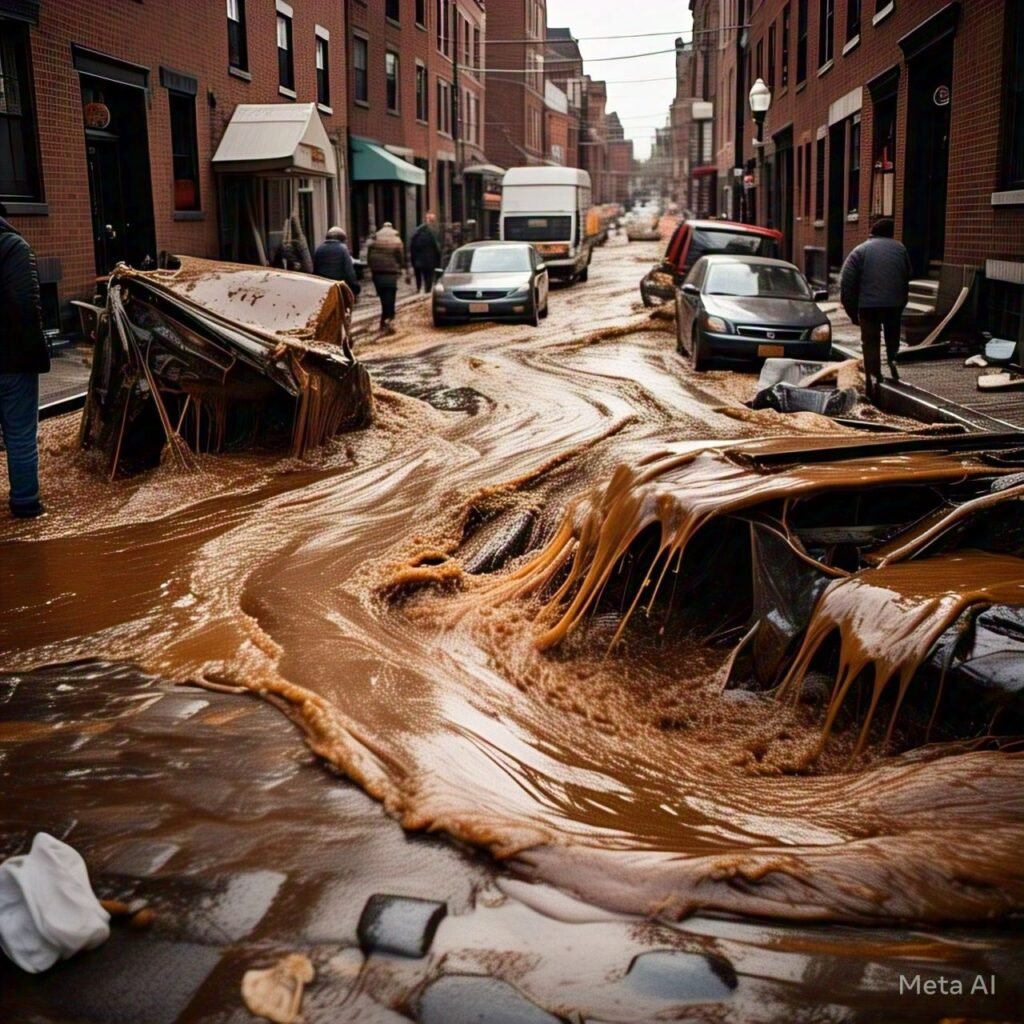
Following the disaster, the design standards for industrial facilities changed. Architects and engineers came to integrate stronger safety regulations, including steel framing reinforced with materials, pressure-release systems, and materials designed with the capacity to withstand forces exerted during handling hazardous materials.
Architectural firms placed greater emphasis on safety as a design element, especially for major industrial projects. New building codes and ordinances, including in Boston, necessitated more complete inspections of structures and the use of safer building materials. The flood, in essence, revolutionized urban architecture by putting safety measures into the design process of industrial buildings to prevent such collapses from happening again.
Reinforcing the Role of the Media in Holding Corporations to Account
The media were a crucial factor in the wake of the Great Molasses Flood, both in providing facts and influencing public opinion and the demand for justice. The flood took place at a time when the media was increasingly taking on the role of keeping corporations accountable for their actions, especially regarding the safety and welfare of citizens. The event was widely covered, with dailies publishing day-to-day accounts of the destruction, rescue operations, and subsequent legal action.
Reporters played a key role in making the flood story public, but they also made the United States Industrial Alcohol Company’s negligence and the larger issues of corporate responsibility an issue. During the weeks and months after the flood, the media kept emphasizing the lawsuits, the plight of the victims, and the larger issues of industrial safety and accountability. This media coverage brought immense pressure upon the company as well as the government to act.
The media coverage in the wake of the flood contributed significantly to the formation of the public perception of industrial negligence and the need for regulation to avoid such catastrophes. It was an early testament to the might of investigative reporting in making companies and industries answerable for their actions. The coverage also contributed to mobilizing public opinion toward legal reforms and the eventual adoption of stricter safety regulations, demonstrating the central part played by media in framing public opinion as well as policy.
Long-Term Urban Redevelopment and Gentrification
The Great Molasses Flood also permanently impacted the redevelopment and gentrification of Boston’s North End. The neighborhood, originally mainly working-class and composed of many immigrant families, was heavily impacted by the flood. The devastation caused by the wave of molasses necessitated wholesale rebuilding on a massive scale that ultimately transformed the face of the North End.
Following the flood, numerous property owners had an opportunity to redevelop their flooded properties. As the North End began to rebuild, the neighborhood slowly experienced a stream of middle-class and affluent residents who wanted to capitalize on its proximity to downtown Boston and the waterfront. This change started transforming the social and economic profile of the North End, with residents being displaced because of increased rents and property values.
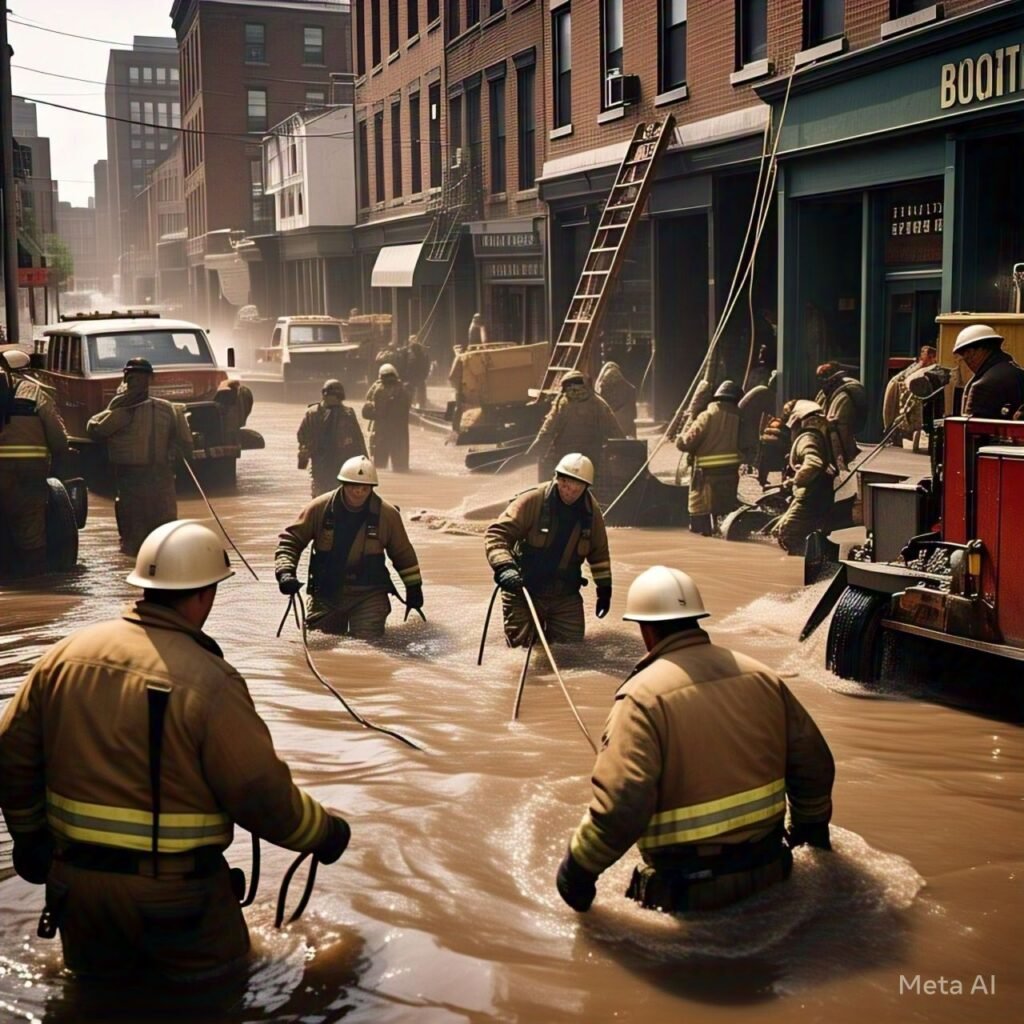
The gentrification process continued at a faster rate in the ensuing decades as the area grew increasingly attractive to potential real estate investors and individuals hoping to benefit from the urban renewal. The originally industrial region gradually shifted to becoming a residential-commercial center with the arrival of new businesses and prosperous residents. As much as the changes in the area brought an improvement in conditions, it generated tensions since old working-class families could not maintain the increased standard of living.
The North End today is a quintessential example of urban gentrification, where old Italian-American culture is intertwined with new, affluent residents. The history of the flood and its consequences is seen in the transformation of the neighborhood over time, illustrating how disasters can bring about physical and social change for better or for worse.
The Role of Community Engagement in Disaster Recovery
The rebuilding after the Great Molasses Flood emphasized the importance of community involvement in the rebuilding and revitalization of neighborhoods following industrial catastrophes. During the days and weeks that followed, North End residents rallied to assist each other. Volunteers coordinated relief efforts, and local churches, organizations, and businesses contributed to aid the victims.
The disaster highlighted community solidarity during catastrophe, but at the same time, it laid emphasis on ensuring formalized ways of community input in the restoration process. Locals started being more involved in urban planning as well as regulation of safety, in the aftermath of the flood, in their local advocacy associations. Community stakeholders collaborated with officials from the city to ensure rebuilding efforts were accommodative of resident needs, particularly those most vulnerable to industrial tragedy.
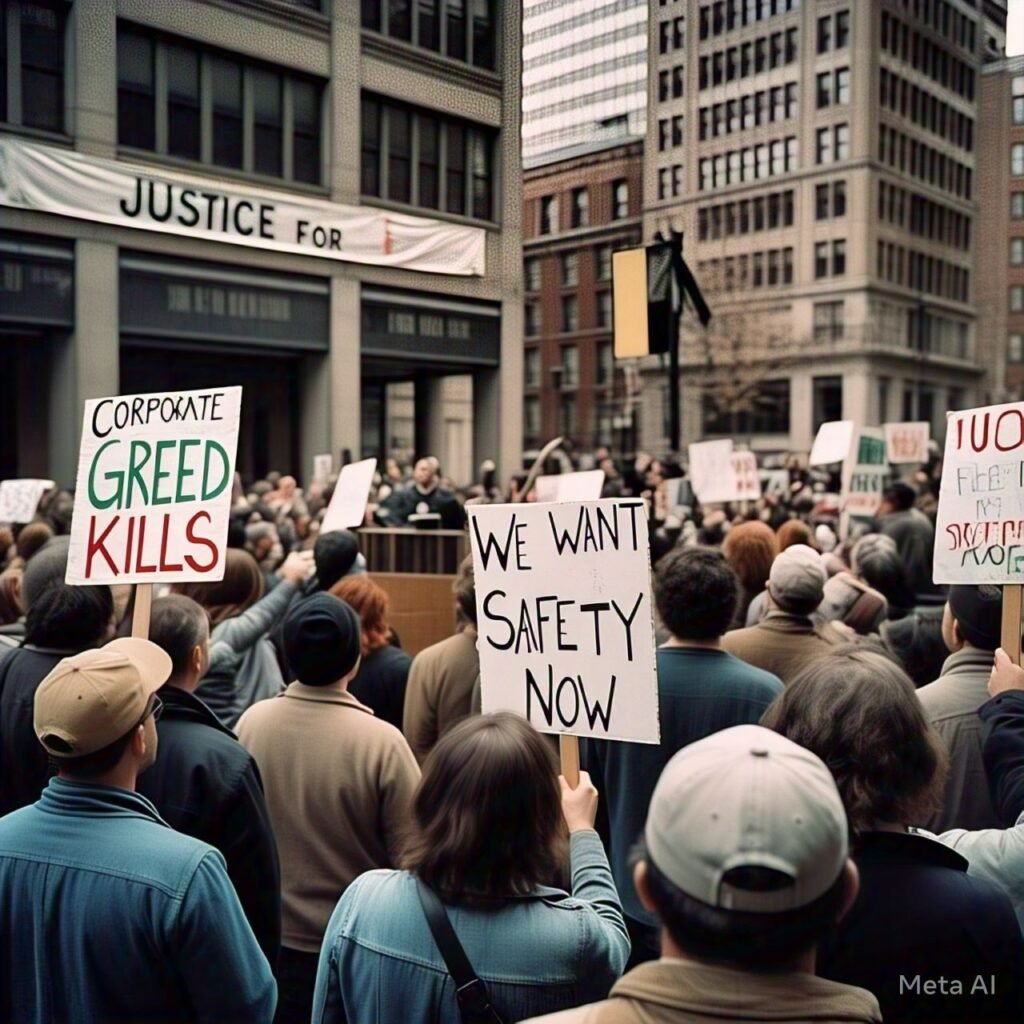
Further, the flood facilitated more civic engagement and activism on the part of the residents of Boston. It served to generate an experience common among individuals with differing backgrounds that tied them together as a collective force, and many were compelled by it to do more about structuring the destiny of the city. This ground-level engagement in disaster relief and urban planning became a bedrock principle of future public participation in Boston’s development, ensuring that community voices were heard in decision making that impacted their daily lives.
These initiatives persist to this day, with community associations and advocacy organizations continuing to play a crucial role in ensuring that the city’s development responds to the needs and priorities of all its citizens. The lessons of the Great Molasses Flood, especially regarding the value of community-based recovery, continue to shape the way Boston manages urban development and disaster response.
The Evolution of Zoning Laws in Boston After the Molasses Flood
The Great Molasses Flood also contributed to a significant transformation in Boston’s zoning laws, with long-lasting effects on the way industrial and residential areas were separated. Before the flood, Boston’s zoning laws were minimal, and industrial operations were often located in close proximity to residential neighborhoods. This lack of separation between industrial zones and residential areas became particularly apparent during the molasses disaster, when the wave of molasses not only destroyed buildings but also endangered residents in nearby homes.
In the wake of the flood, the city recognized the importance of regulating land use to prevent future industrial accidents from having such devastating effects on nearby communities. Urban planners and lawmakers began to advocate for more stringent zoning laws that would create clear distinctions between industrial, residential, and commercial districts. These regulations aimed to reduce the risk of future accidents by ensuring that hazardous industries were located in areas where they posed minimal threat to residential neighborhoods.
The passage of new zoning laws was also driven by the growing public awareness of the dangers posed by unchecked industrial growth. As industrial activities became more complex and risky, cities around the country, including Boston, began to adopt zoning regulations that required industrial facilities to be located further away from residential areas. Over time, these zoning laws helped to shape the development of cities, with a focus on creating safer, more organized urban environments.
The Transformation of Emergency Response Protocols
Another important outcome of the Great Molasses Flood was the transformation of Boston’s emergency response protocols. The flood, which required a large-scale rescue effort to save victims from the sticky molasses, exposed the inadequacies of the city’s emergency preparedness and response systems. In the aftermath of the disaster, city leaders and public safety officials took immediate steps to overhaul how Boston would respond to future industrial accidents or natural disasters.

One of the major changes that resulted from the flood was the establishment of more specialized emergency response units, including teams specifically trained to deal with hazardous materials. The unique nature of the molasses flood, with its sticky and hazardous substance, necessitated the development of specialized techniques for managing chemical and industrial accidents. Firefighters, police officers, and emergency medical teams were trained in handling these types of situations, which included understanding how to decontaminate individuals and manage dangerous industrial substances in urban environments.
Additionally, the flood led to the creation of clearer communication networks between local, state, and federal agencies during crises. Improved coordination between public safety departments, medical teams, and utility companies became a focal point in the aftermath, ensuring that any future disasters could be addressed more effectively and quickly. The event revealed the importance of comprehensive planning, training, and coordination in disaster response, leading to a stronger, more resilient city infrastructure.
Impact on Local Government Structure and Oversight
In addition to the regulatory and safety changes that followed the molasses flood, the event had a lasting impact on Boston’s local government structure. Prior to the disaster, many of Boston’s governmental oversight mechanisms were either insufficient or poorly coordinated. The molasses flood exposed significant gaps in the city’s ability to regulate industrial activities, manage urban development, and protect public safety.
In the years following the flood, Boston implemented several reforms to enhance local government oversight of industrial operations. The city strengthened its regulatory bodies, giving them more authority to inspect and enforce safety standards for industrial businesses.
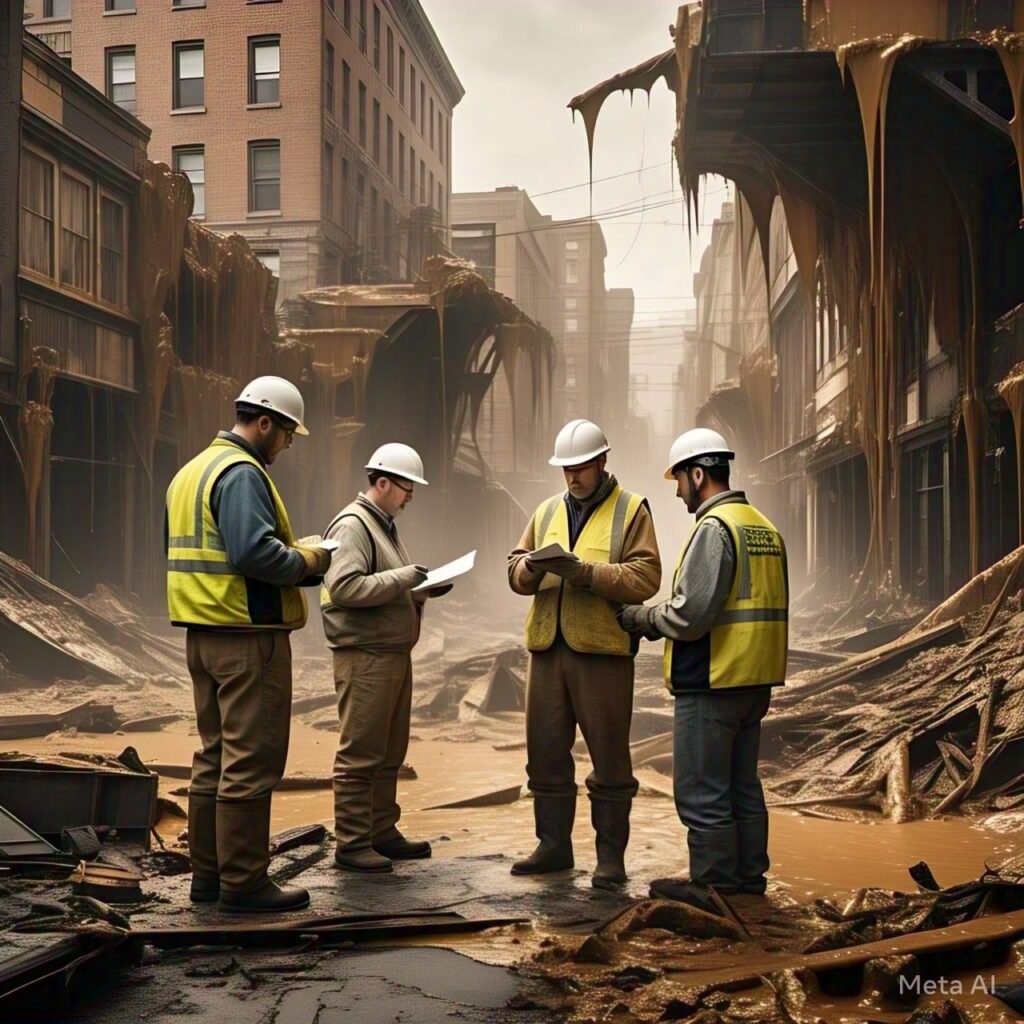
A new, dedicated department for industrial safety and public health was created to ensure that industrial operations did not endanger the public or the environment. This department worked in conjunction with other municipal agencies to ensure that regulations were strictly followed and that businesses took their responsibilities seriously.
Moreover, the Great Molasses Flood underscored the need for better coordination between various arms of local government. Prior to the flood, there had been a lack of collaboration between urban planners, public health officials, and regulatory bodies. Following the disaster, Boston took a more integrated approach to governance, ensuring that city departments worked together to plan, monitor, and enforce urban safety standards. This collaborative approach helped to improve the overall efficiency of local government and set the stage for future improvements in urban planning and disaster management.
Reexamining the Role of Corporate Power in Urban Development
The aftermath of the Great Molasses Flood also prompted a reevaluation of the role of corporate power in urban development. Prior to the flood, large corporations were often granted significant leeway in how they developed their operations, with little regard for the impact on surrounding neighborhoods. The United States Industrial Alcohol Company, which owned the tank that caused the disaster, was able to operate with minimal oversight, which ultimately contributed to the scale of the tragedy.
Following the flood, public outcry over the negligence of the company led to increased scrutiny of corporate practices, particularly in urban areas. There was growing concern over the degree to which large corporations could exert influence over local governments and the development of cities. This led to a broader conversation about the role of corporations in shaping the physical, social, and economic landscapes of cities.
In response to the flood, many cities, including Boston, began to implement stricter regulations governing the relationship between large corporations and urban development. These regulations required corporations to consider the well-being of surrounding communities when planning new industrial sites or facilities. Urban planners and policymakers began to prioritize the needs of local residents and the environment over corporate interests, pushing for development that was more in line with public safety and welfare.
The Legacy of Industrial Accidents in Shaping National Safety Standards
While the Great Molasses Flood had a profound effect on Boston’s local safety regulations and urban planning, its legacy extended far beyond the city. The flood became one of the earliest industrial accidents in the United States to receive widespread national attention, sparking a larger conversation about industrial safety and regulations across the country.

The public outrage over the disaster highlighted the inadequacies of national safety standards for industries handling hazardous materials. In the years following the flood, national attention turned to improving workplace safety and regulating the construction of industrial infrastructure. The incident contributed to the creation of new national safety standards for manufacturing facilities, warehouses, and storage tanks, which were designed to reduce the risks associated with industrial accidents.
The federal government also took steps to create national oversight agencies that would oversee the safety of industrial operations. Although it would take years before agencies like OSHA (Occupational Safety and Health Administration) were fully established, the Great Molasses Flood played a key role in the broader movement toward federal regulation of industrial safety and worker protection. The lessons learned from the disaster helped to shape national policy, influencing the creation of safety standards that would impact industries across the country for generations to come.
Public Reconciliation and Restoration of Community Trust
One of the most significant long-term outcomes of the Great Molasses Flood was the public’s eventual reconciliation with both the city’s leadership and the industrial companies responsible for the disaster. In the immediate aftermath of the flood, there was widespread anger and distrust of the United States Industrial Alcohol Company, which had failed to maintain the molasses tank that caused the disaster. Residents of the North End and the broader Boston area demanded justice for the victims and full accountability for the corporate negligence that had led to the tragedy.
However, over time, the city and its residents began the difficult process of reconciliation. While the legal battles with the company continued for years, there was a growing recognition that rebuilding the community required more than just litigation and punishment.

Efforts were made to restore trust between the government, local businesses, and the public. The city worked to provide aid to the victims and their families, helping them to rebuild their lives, and to ensure that the necessary legal and regulatory frameworks were put in place to prevent future disasters.
The reconstruction efforts also involved efforts to heal the psychological wounds left by the tragedy. Community leaders worked to help residents cope with the emotional toll of the flood, encouraging collective healing and solidarity. This process of reconciliation helped to transform the North End into a stronger, more resilient community, united by its shared experience and its commitment to ensuring that such a disaster would never happen again.
The Role of Labor Unions in Shaping Post-Flood Safety Regulations
Following the devastation caused by the Great Molasses Flood, labor unions played an increasingly prominent role in advocating for worker safety and fair compensation. At the time of the flood, workers in industrial environments, especially those in hazardous conditions like the ones that led to the molasses tank’s failure, had limited protections under the law. The disaster underscored the vulnerability of laborers who were employed by large industrial companies that often placed profits over the safety of their employees.
In the aftermath of the flood, labor unions in Boston and across the nation began to push harder for more robust workplace safety regulations. They called for better oversight of dangerous industries and demanded that companies take greater responsibility for the safety of their workers. The flood provided a rallying point for unions that had long struggled to secure better working conditions, wages, and compensation for workers injured on the job.
Unions were instrumental in lobbying for changes to both local and national labor laws. They advocated for stronger regulations on workplace safety, the establishment of workers’ compensation programs, and the right to unionize in hazardous industries. In the years that followed, labor unions continued to play a crucial role in advocating for the rights of workers, ensuring that incidents like the Great Molasses Flood would lead to systemic change in how industrial labor was regulated. As a result, workers in hazardous industries saw significant improvements in their conditions, and the push for industrial safety would continue to shape labor laws throughout the 20th century.
Changes to the City’s Environmental Policy
Another significant outcome of the molasses flood was its long-lasting effect on Boston’s environmental policy. While the immediate aftermath of the flood was focused on public safety, the cleanup, and rebuilding efforts, there was also a growing recognition of the environmental damage caused by industrial accidents. The molasses that flooded the streets was not only a dangerous substance to human health, but it also posed a serious environmental threat. The sticky, syrupy residue contaminated the soil, water, and local ecosystem, leading to concerns over long-term environmental consequences.
In the years following the flood, Boston began to develop more comprehensive environmental policies to address the potential risks posed by industrial operations. These policies focused on reducing the environmental impact of manufacturing processes, requiring companies to take greater responsibility for pollution control, and ensuring that industries did not adversely affect public spaces. The flood served as a wake-up call for local authorities, who began to realize that urban development and industrial growth needed to be balanced with environmental sustainability.
Boston implemented stricter environmental standards for industrial plants, including requirements for waste management, pollution reduction, and safeguards to prevent hazardous materials from contaminating public spaces. The lessons learned from the molasses flood were also echoed in subsequent environmental disasters, reinforcing the need for more careful oversight of industrial activities in urban areas. The event ultimately played a role in the development of national environmental regulations, influencing both state and federal agencies to enact policies aimed at protecting public health and the environment.
The Legacy of Industrial Accidents on the City’s Risk Management Culture
The Great Molasses Flood significantly influenced Boston’s broader approach to risk management, not only in terms of industrial safety but also in the city’s overall preparedness for disasters. Before the flood, Boston, like many cities at the time, lacked a coordinated risk management strategy for industrial and natural disasters. The flood highlighted the inadequacy of emergency response systems and the need for more comprehensive planning to mitigate the impact of such unexpected events.

In the wake of the disaster, city planners and safety experts began developing risk management strategies that would apply to a variety of potential hazards. These strategies focused on creating better systems for disaster prediction, preparation, and recovery. The city began to invest in disaster response training, establish communication networks to alert citizens to threats, and develop infrastructure that could withstand accidents or extreme events. This marked a significant shift from a reactive to a more proactive approach to urban risk management.
One of the key lessons learned from the molasses flood was the importance of mitigating risk before disaster strikes. As a result, Boston started to implement more stringent risk assessment processes, particularly in neighborhoods with high concentrations of industrial activity. These assessments would evaluate the potential for accidents, the severity of their impact, and the measures needed to prevent or minimize damage. The city also began to create emergency plans that could be quickly enacted in the event of industrial accidents or other catastrophic events.
The Evolution of Legal and Liability Frameworks in Urban Disasters
The Great Molasses Flood also played a major role in the evolution of legal frameworks regarding liability and compensation in cases of industrial disasters. Prior to the flood, legal systems were often ill-equipped to handle the scale and complexity of industrial accidents. The disaster, with its widespread impact and the number of people affected, exposed the inadequacies of existing legal frameworks in holding corporations accountable for the harm caused by their negligence.

Following the flood, there was significant pressure on the legal system to improve how it addressed industrial accidents. The flood prompted a reevaluation of liability laws, with a particular focus on making corporations accountable for their actions. In the case of the Great Molasses Flood, the United States Industrial Alcohol Company faced lawsuits from victims seeking compensation for injuries and damages. While the company ultimately avoided a large settlement due to complex legal proceedings, the flood brought to light the need for clearer liability laws and more effective mechanisms for compensating victims of industrial accidents.
In the years that followed, the legal system began to evolve, incorporating new frameworks for corporate liability and disaster recovery. Laws governing compensation for workers injured on the job and for individuals harmed by industrial negligence were strengthened. Additionally, the flood set the stage for the development of federal regulations that would hold companies more accountable for their environmental impact and safety standards. The evolution of these legal frameworks not only influenced the development of industrial safety but also contributed to a broader shift in how cities and industries approached risk and liability.
The Changing Relationship Between Industry and the City’s Public Image
The Great Molasses Flood also changed how Boston viewed its relationship with industry and its public image as a city with a thriving industrial economy. Before the flood, Boston, like many other industrial cities, relied heavily on the presence of large factories and manufacturing plants to drive economic growth. However, the disaster demonstrated the risks of unchecked industrial expansion, especially when it came to the safety of residents and the potential for environmental harm.
Following the flood, Boston’s public image shifted. The city became more cautious in its embrace of industrial development, and public confidence in large corporations began to erode. This shift in public perception forced local officials to take a more active role in regulating industries, ensuring that economic growth would not come at the expense of public safety. As industries recovered from the flood and sought to rebuild their facilities, they were faced with new regulations and public scrutiny.
At the same time, the city began to invest in diversifying its economy, focusing on industries that were less likely to pose a significant risk to public safety. This diversification helped to balance the city’s economic future, reducing its dependence on high-risk industries. The changing relationship between industry and the public also resulted in a more cautious and responsible approach to industrial development, shaping Boston’s economic landscape for decades to come.
Transforming the Concept of Industrial Responsibility
The Great Molasses Flood also played a crucial role in shaping the evolving concept of corporate and industrial responsibility. Before the disaster, industries were often perceived as being above reproach, with limited accountability for their actions. However, the widespread media coverage and public outrage following the molasses flood revealed the dangers of this lack of accountability. The event sparked a broader conversation about the ethical responsibilities of corporations, particularly those that operated in densely populated urban areas.

The fallout from the flood led to changes in how companies approached their operations, particularly in terms of safety and their relationship with local communities. Industrial leaders began to recognize that maintaining a good public image required more than just economic performance—it required taking responsibility for the safety of workers, residents, and the environment. Companies began to adopt more proactive safety measures, establish community outreach programs, and work more closely with local governments to ensure that their operations were aligned with public interests.
The flood thus contributed to a broader transformation in corporate culture, one that emphasized corporate social responsibility and a more ethical approach to business practices. The event marked a pivotal moment in how industry and society viewed the role of corporations in urban life, setting the stage for future developments in corporate governance and public accountability.
The Impact on Emergency Services and Public Awareness of Industrial Accidents
The Great Molasses Flood significantly influenced how emergency services in Boston prepared for and responded to large-scale industrial accidents. The disaster revealed that, while the city had emergency response mechanisms for smaller incidents, it was ill-equipped to deal with a major industrial catastrophe of such a magnitude. In addition to the massive loss of life and damage to infrastructure, the flood highlighted the complexity of responding to a disaster caused by a hazardous industrial product. The city had to adapt rapidly, with emergency services scrambling to help victims who were trapped, injured, or exposed to the sticky and dangerous molasses.
In the immediate aftermath, Boston’s emergency services took note of the challenges posed by dealing with an industrial substance that was difficult to remove and clean up. For example, the molasses wave was not only hazardous because of its weight and force but also because of its unique composition, which made it an environmental and health hazard.

In response, emergency response teams began receiving specialized training in how to manage chemical spills and hazardous material accidents. This shift in training helped emergency services across the country refine their preparedness for industrial accidents, particularly those involving toxic chemicals or materials that could present environmental risks.
Furthermore, the event created a public awareness of industrial risks that had not been fully understood before. Residents of Boston, particularly in the North End, began to question the safety of the industries surrounding their neighborhoods. This shift in public consciousness prompted both citizens and local authorities to demand more stringent safety standards for industrial businesses. The flood indirectly raised awareness about the potential dangers of industrialization, even in major urban centers, leading to grassroots activism calling for better monitoring, regulation, and risk management.
Impact on Boston’s Waterfront Development and Urban Navigation
The Great Molasses Flood also had long-term effects on the development and regulation of Boston’s waterfront. Prior to the flood, the waterfront had become a busy hub for industrial and commercial activities, with factories, storage tanks, and warehouses lining the shores of Boston Harbor. Many of these structures were directly involved in industrial operations such as the manufacturing of molasses and other materials that were stored in massive tanks.
After the flood, there was a reevaluation of the use of the waterfront for industrial purposes. The dramatic and destructive event caused by the molasses tank spilling into the surrounding area underscored the need for more careful planning regarding industrial storage and infrastructure located near densely populated urban zones. One significant consequence was the increasing pressure to relocate hazardous industrial facilities further away from residential areas, and the city’s waterfront began to see new development initiatives focused on creating safer, more vibrant spaces for public use.
Moreover, the flood raised questions about urban navigation in relation to the waterfront. In the aftermath of the disaster, local officials began to assess how the flow of goods and materials was impacting the city’s infrastructure, especially concerning the potential risks posed by moving large volumes of hazardous substances. As a result, new regulations were introduced to ensure that transportation routes for hazardous materials were separated from critical urban infrastructure, such as residential neighborhoods, schools, and public spaces. This shift in planning priorities helped shape future waterfront development projects, promoting safer transportation routes for hazardous materials and minimizing the risk of future industrial accidents.
The Role of Urban Planning in Reducing Industrial Disasters
The Great Molasses Flood also highlighted the critical importance of urban planning in preventing industrial disasters. Before the flood, cities like Boston were expanding rapidly, and industrialization was a driving force behind urban growth. However, the rapid expansion was not always accompanied by proper planning or sufficient infrastructure to manage the associated risks. The flood forced urban planners to reassess how the city’s growth intersected with industrial development, especially in areas where hazardous materials were stored or processed.

In the years after the flood, urban planning became increasingly focused on creating safe, well-organized environments that separated residential areas from industrial zones. Planners began to design cities with safety in mind, ensuring that industrial facilities and factories were located in areas where the risk of accidents would have minimal impact on surrounding communities. Additionally, zoning laws were revised to reflect the importance of managing industrial risk while fostering urban growth.
Urban planners also began to incorporate environmental considerations into their designs, including the prevention of contamination from industrial waste or accidents. The lessons learned from the flood led to a more strategic approach to urban development, where the needs of both industrial growth and public safety were balanced. This shift in planning priorities had lasting effects on the development of Boston and many other cities across the United States, shaping the trajectory of urban planning for decades to come.
Enhancing the Role of Insurance and Financial Systems in Disaster Recovery
The Great Molasses Flood had significant implications for the insurance and financial systems, particularly in relation to disaster recovery. The flooding, caused by the rupture of the United States Industrial Alcohol Company’s molasses storage tank, led to widespread destruction and financial losses, prompting many to question how well-prepared the city’s financial institutions were to handle the economic fallout from industrial accidents.
In the aftermath of the flood, it became clear that many businesses, including the United States Industrial Alcohol Company, had insufficient insurance coverage to fully compensate for the damage caused by the disaster. In addition to the destruction of buildings and infrastructure, businesses faced costly legal battles and claims for compensation from victims of the flood. As a result, there was a significant push to improve the role of insurance in disaster preparedness and recovery.

The insurance industry in Boston, and across the nation, started to adopt new practices aimed at better managing risks associated with industrial operations. Policies covering industrial accidents, particularly those involving hazardous materials, were enhanced to ensure businesses could provide adequate compensation for damages and injuries in the event of future disasters. Financial institutions also began to recognize the need for specialized disaster recovery funds and plans that could help cities and businesses recover more quickly from major industrial accidents.
These changes in the financial and insurance sectors not only shaped future disaster recovery efforts but also contributed to the development of broader economic systems that accounted for the risks posed by industrial activity. They helped establish a more comprehensive framework for managing risk, which included improved insurance coverage for industrial operations and a better understanding of how to support communities affected by disasters.
The Shift Toward Citizen Activism and Greater Government Accountability
The Great Molasses Flood spurred the rise of citizen activism in Boston, as people demanded more accountability from local businesses and government authorities. In the wake of the flood, there was widespread outrage over the United States Industrial Alcohol Company’s lack of oversight and maintenance of its molasses tank, which was ultimately deemed responsible for the catastrophe. This event catalyzed a broader movement for corporate accountability, with residents of Boston and beyond calling for greater regulation of industries and stricter enforcement of safety standards.

The public’s demand for accountability extended beyond corporate negligence, influencing how government officials interacted with their constituents. Citizens began to assert their right to be involved in decision-making processes regarding urban planning, industrial development, and public safety. This shift in the public’s relationship with government officials led to the growth of advocacy groups and grassroots organizations that worked to ensure their voices were heard in policy discussions.
The flood also had an impact on local elections, as political candidates began to prioritize issues related to industrial safety, environmental protection, and urban development in their platforms. As activism grew, so did the expectation that local government would prioritize public safety and transparency in industrial oversight. The shift toward greater government accountability was an essential part of the city’s recovery process, and it influenced subsequent policy decisions that aimed to empower communities and strengthen the relationship between residents and local authorities.
The Role of Technology in Preventing Future Industrial Accidents
The Great Molasses Flood, while a tragedy, also helped spur advancements in technology aimed at preventing future industrial accidents. The flood, with its devastating impact and the difficulty of managing the hazardous substance, highlighted the need for improved technological solutions to address industrial risks. In the aftermath, engineers and inventors began to explore new ways to monitor industrial tanks and prevent similar disasters from occurring.
Technologies that allowed for more precise measurements and better control over industrial storage systems were developed and implemented in the years following the flood. For example, early versions of pressure relief valves and more reliable tank materials were introduced to prevent the rupture of storage tanks. Similarly, advancements in monitoring systems, such as pressure sensors and safety alarms, began to be implemented in factories and industrial facilities to detect and address issues before they escalated into major disasters.
These technological advancements were not limited to the industrial sector. The disaster also prompted the development of new emergency response technologies and systems, including more advanced communication networks and tools to coordinate rescue efforts. In the long term, the technological lessons learned from the flood helped shape the development of modern safety equipment and disaster response technologies, contributing to a more resilient infrastructure for both industries and cities.
The Influence on Boston’s Public Health Policies and Urban Health Infrastructure
The Great Molasses Flood had a significant impact on the development of public health policies in Boston, especially regarding urban health infrastructure. The flood exposed the risks posed by large-scale industrial operations not only to physical safety but also to the health of the urban population. The sticky, syrupy residue that flooded the streets created numerous health hazards, including contamination of water supplies, food sources, and even potential respiratory issues for those exposed to the dense, molasses-infused air. In addition, the survivors and those working in cleanup efforts faced serious health risks due to the toxicity of the molasses and the physical strain involved in rescue operations.
Following the disaster, Boston’s public health policies were reevaluated, and new measures were enacted to better protect the population from both industrial accidents and their aftermath. These measures included better tracking and reporting of industrial health risks and stricter regulations for handling chemicals and materials that could pose a health hazard. Public health agencies in Boston began to integrate industrial accident preparedness into their broader public health strategies, ensuring that the city would be better equipped to handle similar disasters in the future.
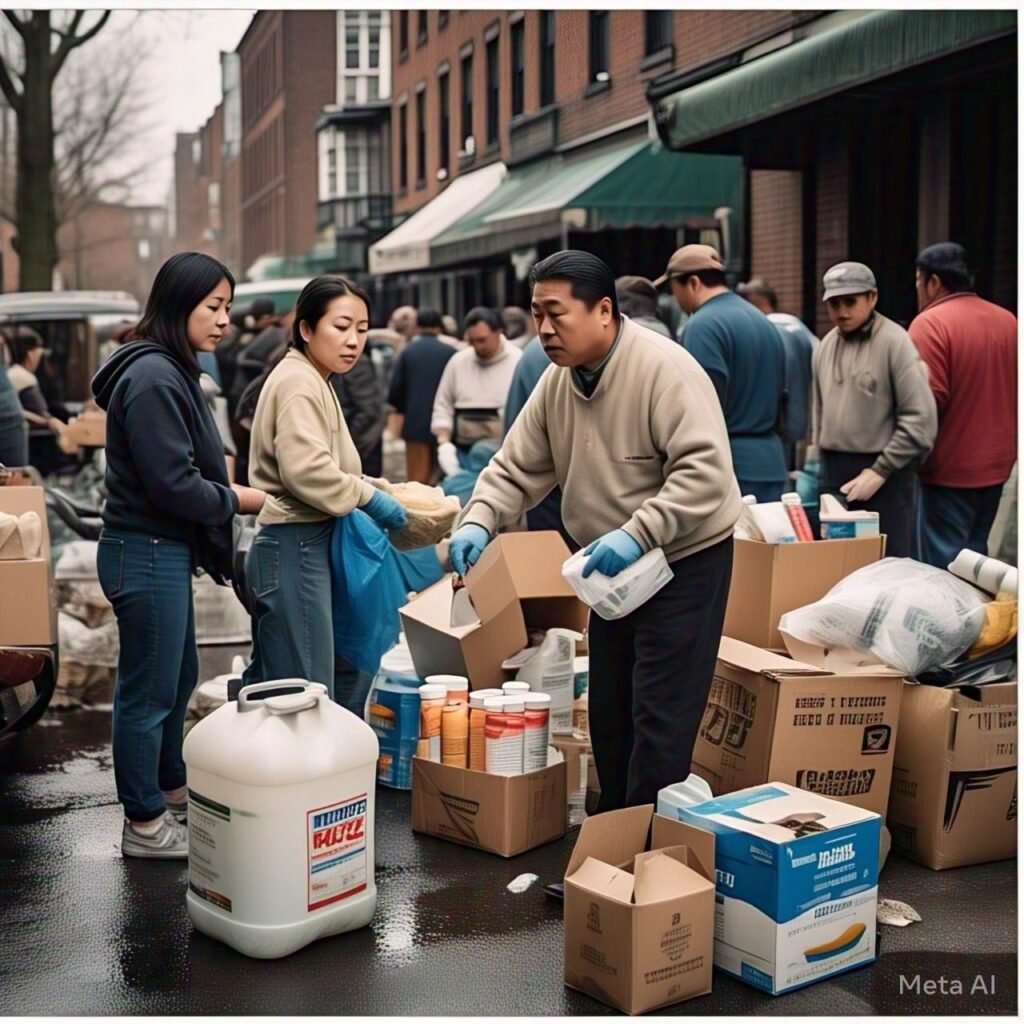
Additionally, the flood underscored the need for a more robust urban health infrastructure that could quickly respond to emergencies. The city invested in improving public health systems, such as hospital preparedness, sanitation measures, and the availability of emergency medical supplies. Public health experts began collaborating more closely with urban planners and industrial regulators to create safer working and living conditions, preventing accidents that could lead to widespread health issues.
The flood marked the beginning of an era where urban health concerns and industrial safety were considered inseparable, leading to reforms in public health and safety protocols that would become foundational for city planning in the 20th century.
The Role of the Media in Shaping Public Perception of Industrial Risks
The Great Molasses Flood also illustrated the powerful role that the media plays in shaping public perception of industrial risks. The flood was a media spectacle, and newspapers and other forms of media were quick to cover the event, highlighting the scale of the destruction and the suffering of the victims. The press played a critical role in bringing attention to the causes of the disaster and holding the United States Industrial Alcohol Company accountable for its negligence in maintaining the molasses tank.
In the aftermath of the flood, media outlets became a primary source for information on the ongoing investigations, cleanup efforts, and the legal battles that followed. The media’s coverage of the disaster not only informed the public but also galvanized public sentiment about the need for stricter industrial regulations. The stories and images of the disaster, such as the molasses-soaked streets and the heroic rescue efforts, captured the collective imagination and led to widespread demands for greater oversight of industrial facilities.
Moreover, the media’s focus on the human cost of the disaster helped create a broader cultural shift, encouraging citizens to take a more active role in advocating for safer living conditions. The flood demonstrated the potential dangers of unchecked industrial growth and served as a rallying point for public advocacy, eventually leading to greater involvement of the media in holding corporations and government entities accountable for industrial safety. This shift also encouraged the rise of investigative journalism focused on industrial accidents and their impacts, influencing how future public safety issues were covered by the press.
The Influence on Regulatory Agencies and Oversight of Large-Scale Industrial Facilities
The aftermath of the Great Molasses Flood played a pivotal role in shaping the evolution of regulatory agencies and the way large-scale industrial facilities were monitored and overseen. Before the flood, regulatory agencies were either underdeveloped or lacked the authority and resources to enforce meaningful safety regulations in industrial settings. The disaster exposed the shortcomings of local, state, and even federal regulatory frameworks in preventing and mitigating industrial accidents.
In response to the disaster, calls for stronger regulation and better oversight of industries became more urgent. Several key regulatory agencies, such as the U.S. Department of Labor and state-level safety and health organizations, started to develop more comprehensive safety standards for the industrial sector. The flood prompted these agencies to focus on ensuring that factories and storage facilities met structural integrity standards, including reinforced construction and regular inspections.
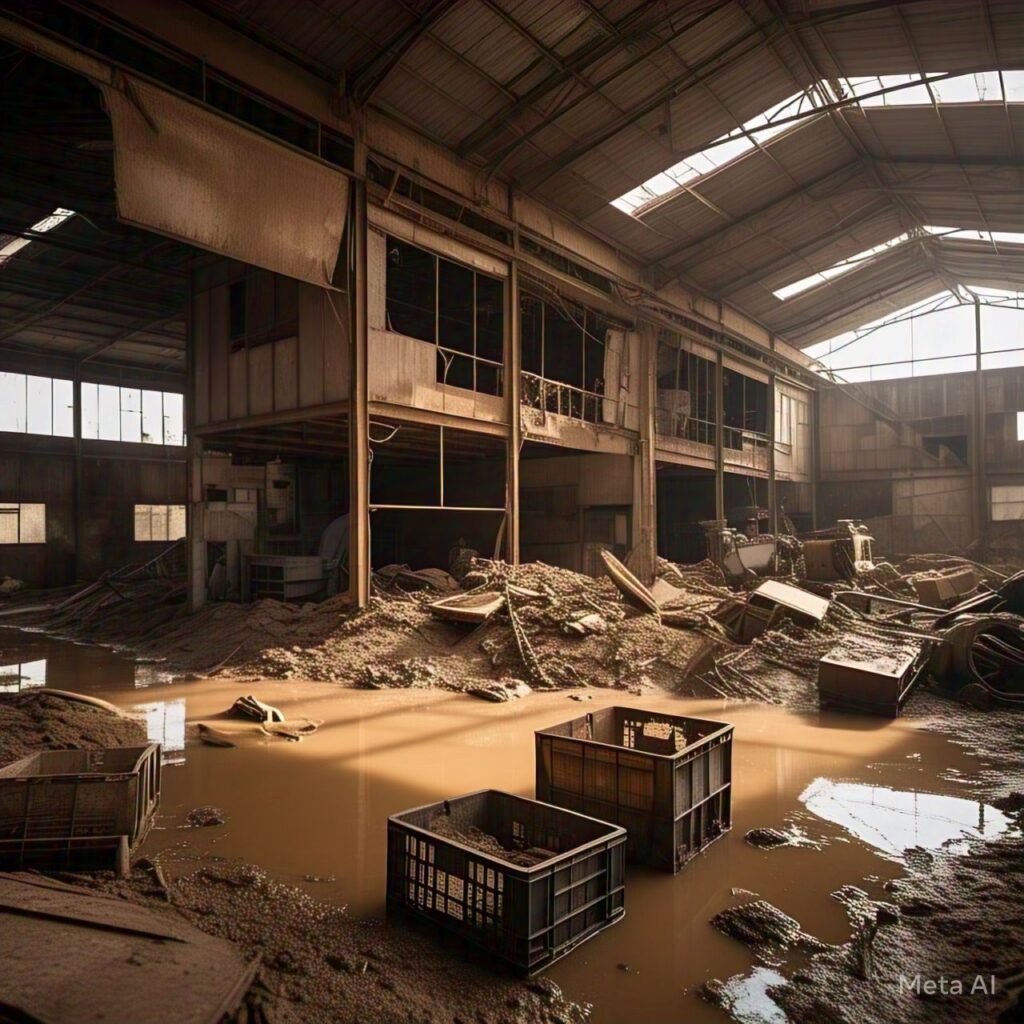
The idea of requiring regular safety audits, particularly for facilities handling potentially hazardous materials, began to take hold, as it became clear that accidents like the Great Molasses Flood could be avoided through proactive measures.
Moreover, federal agencies began to push for national safety standards and regulations that would address the risks posed by industrial facilities, leading to the formation of organizations like the Occupational Safety and Health Administration (OSHA) in the years to come. These agencies provided a framework for regulating workplace safety, ensuring that industrial operations would be regularly inspected and held accountable for meeting safety standards. The Great Molasses Flood acted as a catalyst for the growth of regulatory bodies and the increasing sophistication of government oversight in industrial operations.
The Transformation of the Role of Local Government in Industrial Oversight
Local government in Boston experienced a dramatic transformation in its role in overseeing industrial operations following the Great Molasses Flood. Prior to the flood, Boston, like many other cities, had taken a relatively hands-off approach to regulating industrial activity, especially in areas like the North End, where the molasses tank was located. The flood, however, underscored the necessity for a more involved and proactive local government role in ensuring public safety.
In the years following the disaster, the city of Boston began to implement more stringent regulatory practices that required industries to comply with a set of local safety standards. The city’s public works and safety departments began collaborating more closely with industrial firms, encouraging transparency and cooperation in efforts to improve industrial conditions. For example, local building codes were revised to include stricter standards for industrial facilities, including rules regarding the maintenance of large storage tanks and the inspection of industrial equipment.

The flood also had a lasting effect on the city’s zoning policies, with local government adopting stricter zoning laws that prohibited hazardous industrial activities near residential areas. These zoning laws were part of a broader effort to reduce the potential for accidents and to ensure that industrial growth would not come at the expense of public safety.
Additionally, local officials began to take a more active role in educating the public about industrial risks and the importance of safety regulations. The city established new public safety campaigns and initiatives that aimed to raise awareness about the dangers of industrial accidents and the importance of ensuring that industries complied with safety regulations. The role of local government shifted from being a passive entity to one that actively worked to prevent future disasters by ensuring that industries met safety standards and operated in a way that minimized risks to the surrounding communities.
Influence on the Development of Infrastructure and Urban Resilience
The Great Molasses Flood had a profound impact on the development of infrastructure in Boston, particularly in terms of urban resilience. The disaster exposed the vulnerabilities in the city’s infrastructure, especially in terms of its ability to handle sudden, large-scale industrial accidents. The flood highlighted the need for better flood control systems, more resilient transportation infrastructure, and better-designed public spaces that could withstand industrial disasters.
In the aftermath, the city of Boston began to invest in infrastructure improvements to make it more resilient to future industrial accidents and other catastrophic events. For example, the city implemented new flood control measures and redesigned drainage systems to prevent the kind of widespread flooding that had occurred in the North End. Additionally, the city prioritized the development of more robust transportation routes that could quickly facilitate the movement of emergency responders and supplies in the event of a disaster.

Urban resilience also became a central consideration in Boston’s long-term planning. The city focused on ensuring that critical infrastructure—such as hospitals, schools, and emergency services—was built to withstand disasters, whether they were caused by industrial accidents or natural events like hurricanes or earthquakes. The flood demonstrated the importance of planning for the worst-case scenario, leading to the incorporation of resilience into the city’s overall development strategy.
This shift toward resilient infrastructure would go on to influence future urban planning efforts in Boston and other cities across the United States, leading to the development of more disaster-resistant infrastructure that prioritized both safety and sustainability. The flood marked a turning point in how urban planners viewed the relationship between infrastructure and public safety, and it served as a blueprint for the development of more resilient cities in the years to come.
Conclusion
The Great Molasses Flood of 1919, though a tragic and often overlooked event in history, left a profound impact on Boston’s urban development, safety regulations, and industrial oversight. The catastrophic disaster not only reshaped the city physically but also prompted significant changes in how cities across the United States approached industrial safety, public health, and urban planning. The flood exposed the vulnerabilities in industrial infrastructure and underscored the need for stronger regulations and better safety protocols to protect urban populations from the dangers of unchecked industrialization.
In the aftermath, Boston witnessed the rise of stricter safety regulations, more robust emergency response systems, and a closer relationship between public health and industrial operations. It led to a more active role for local government in regulating industrial activities and increased awareness among the public of the risks posed by such facilities. The lessons learned from the flood helped shape the future of urban planning, focusing on the importance of resilience, zoning, and infrastructure designed to withstand industrial accidents.
Furthermore, the flood influenced the growth of regulatory agencies, the insurance industry, and technological innovations, all aimed at minimizing the risk of future disasters. Perhaps most importantly, it sparked a cultural shift toward greater citizen activism and the demand for more transparency and accountability from both corporations and government officials. The legacy of the Great Molasses Flood lives on in the more safety-conscious, resilient cities we see today, reminding us of the critical importance of careful planning, effective regulation, and community engagement in shaping urban environments.
Latest Updates






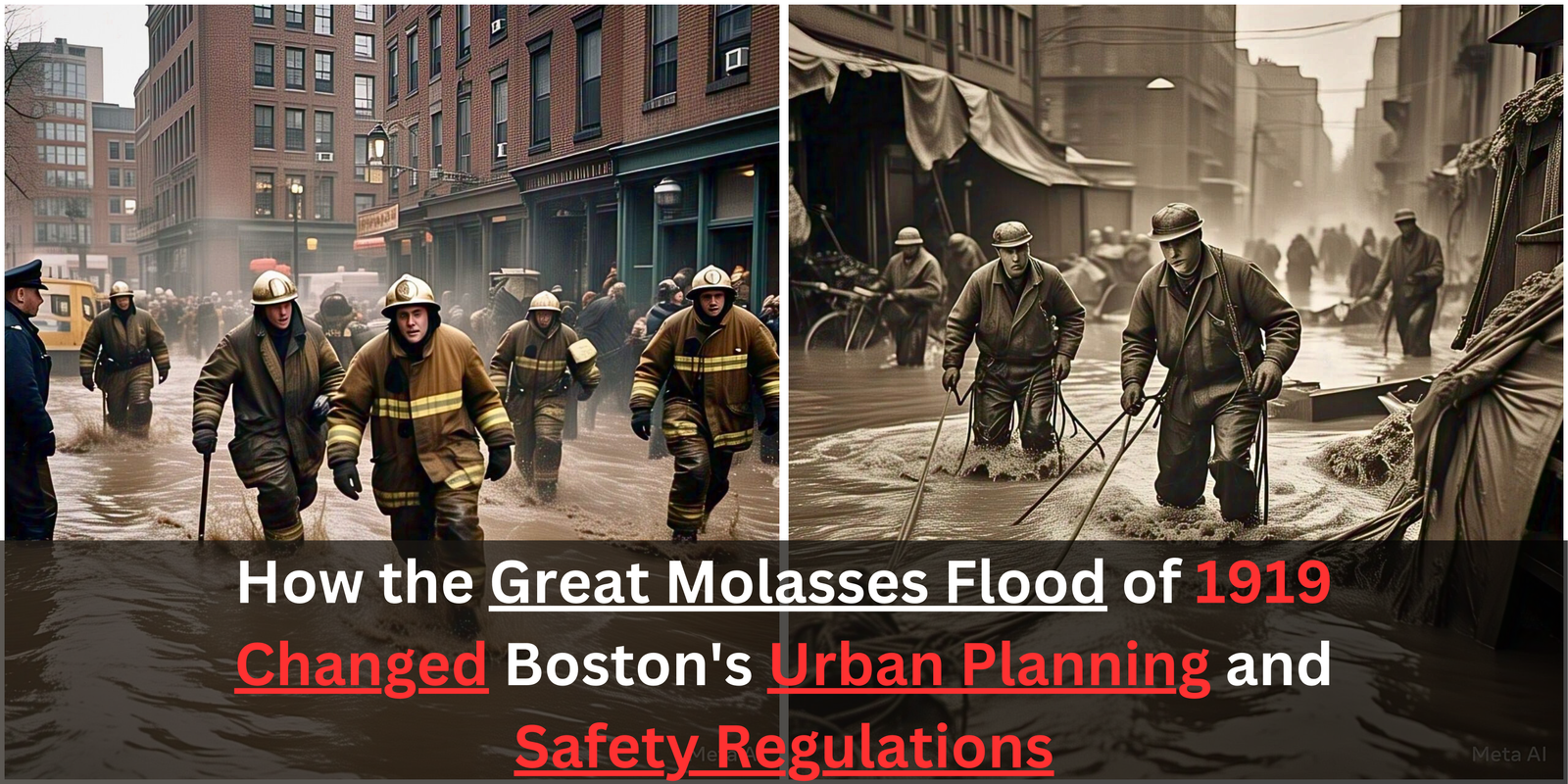
 Let’s imagine, explore, and uncover the mysteries together!
Let’s imagine, explore, and uncover the mysteries together!